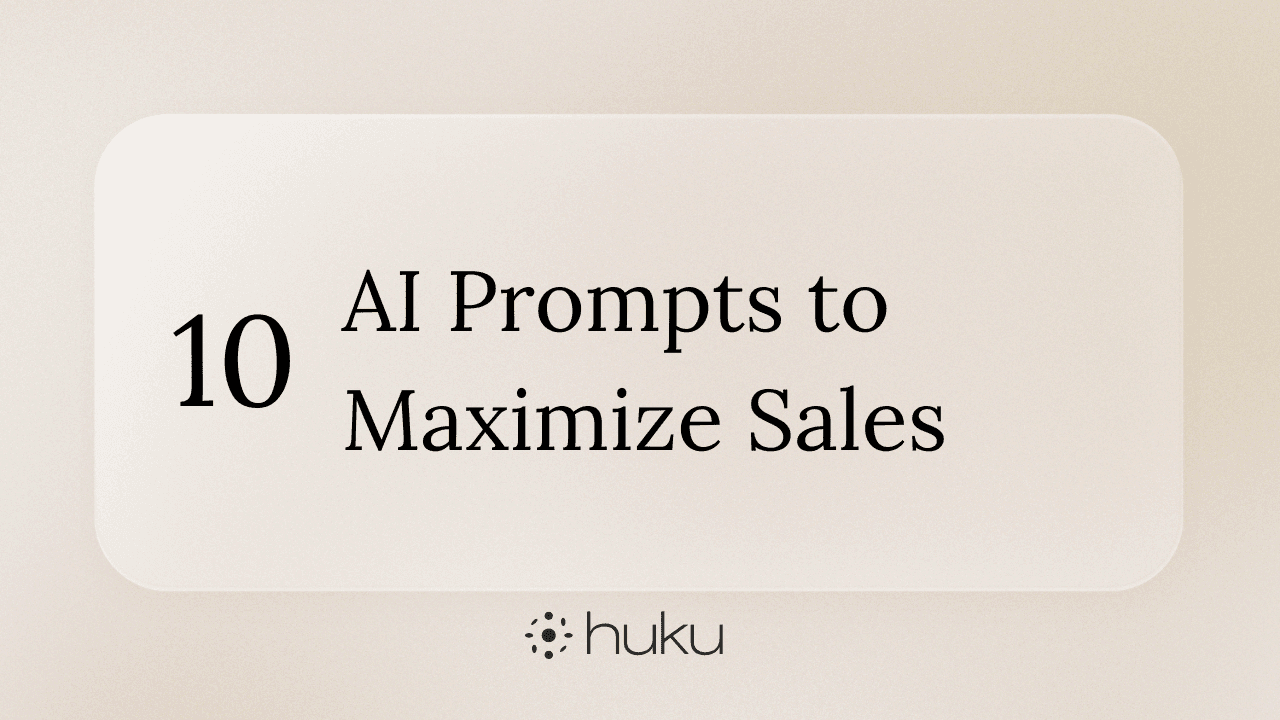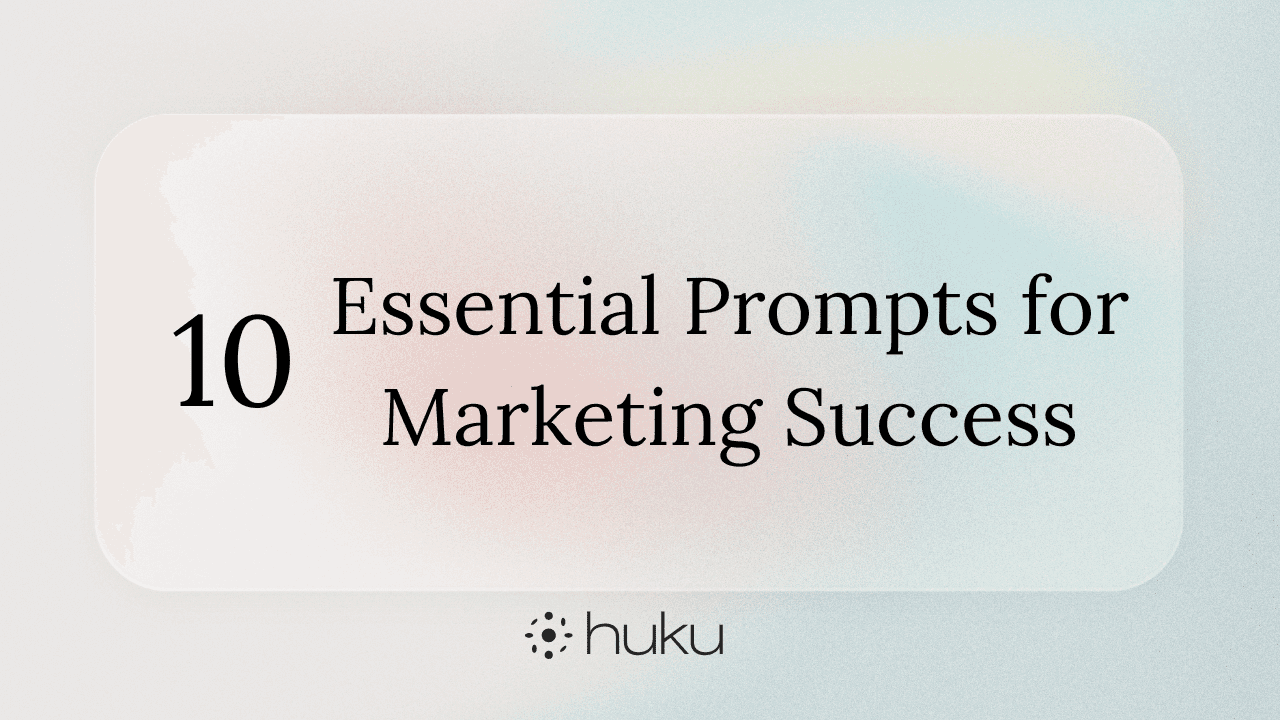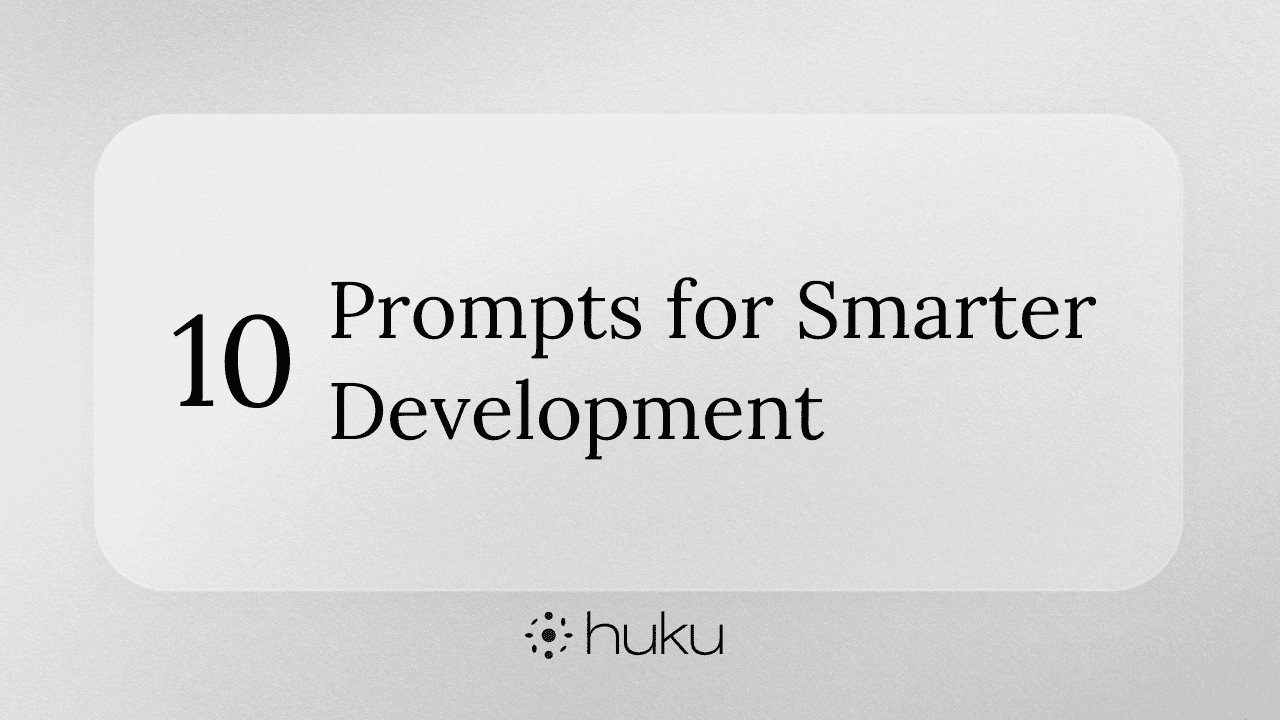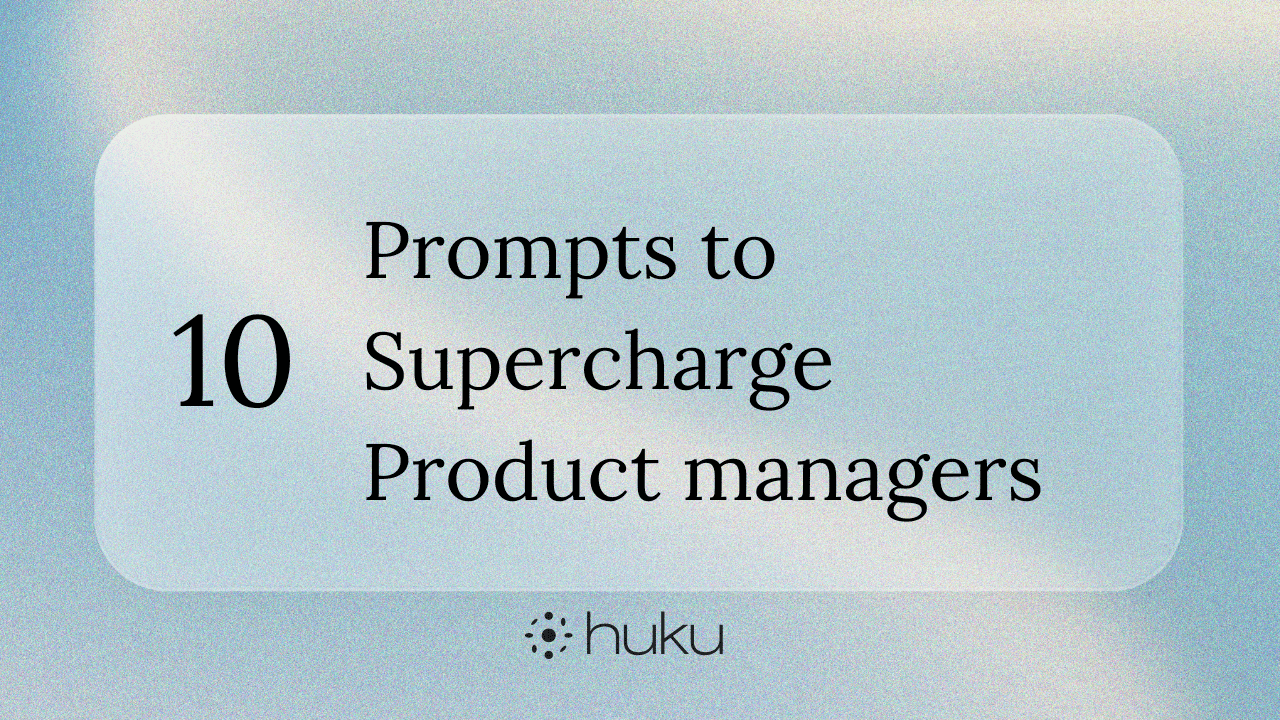AI Applications
AI Prompts for Sales: 10 Ways to maximize Your Revenue Generation
Author
Nov 23, 2024
Introduction
Sales professionals are drowning in tasks but starving for results. While everyone talks about AI, few are using it strategically to win deals. This isn't another generic 'AI in sales' guide – it's your playbook for turning AI into your secret weapon for closing deals.
In the next 7 minutes, you'll get 10 battle-tested AI prompts that top performers use to crush quotas. No fluff, no theory – just practical prompts that solve real sales challenges, from prospecting to closing. These aren't just prompts; they're your shortcuts to deeper customer insights, faster responses, and bigger deals.
The Power of AI in Sales
Before diving into specific prompts, let's understand why AI has become essential in modern sales:
- Accelerates prospect research and qualification
- Reduces time spent on repetitive tasks
- Enables hyper-personalized customer communications
- Improves forecast accuracy and pipeline management
- Enhances decision-making through data analysis
10 Essential AI Prompts for Sales Professionals
1. Personalized Outreach
Prompt: "Create a personalized outreach email to [prospect name] from [company name], incorporating: 1) Recent company news or achievements, 2) Specific pain points based on their industry, 3) Relevant case studies or social proof, and 4) A clear value proposition. Use a professional yet conversational tone with an engagement score of 8/10."
Why it works: This prompt generates highly targeted messages that resonate with prospects by combining company research with industry-specific insights.
Example Application:
For a SaaS sales representative:
"Create an outreach email to Sarah Johnson, VP of Marketing at TechCorp, incorporating their recent Series B funding announcement and expansion into Asia, focusing on marketing automation challenges in scaling companies."

2. Lead Scoring
Prompt: "Analyze the following lead data points and create a scoring framework considering: 1) Company size and industry fit, 2) Engagement history, 3) Budget signals, 4) Timeline indicators, and 5) Decision-maker involvement. Provide a 1-100 score with detailed justification and recommended next actions."
Why it works: AI excels at processing multiple data points to identify patterns and predict conversion likelihood.
Example Application:
"Score these three enterprise leads:
- Acme Corp: 2000 employees, 12 website visits, downloaded pricing guide, CEO attended webinar
- Beta Inc: 1500 employees, 5 email opens, requested demo, CFO engagement
- Gamma Ltd: 1800 employees, 20 website visits, multiple decision-maker interactions"

3. Automated Follow-Ups
Prompt: "Generate a sequence of 5 follow-up messages for [scenario], incorporating: 1) Progressive value additions, 2) Trigger points for personalization, 3) Optimal timing recommendations, and 4) Alternative contact channel suggestions. Include variety in tone and approach while maintaining conversation flow."
Why it works: This prompt helps create natural, progressive communication flows that keep prospects engaged without feeling automated.
Example Application:
"Create a follow-up sequence for a prospect who attended our product demo but hasn't responded to the initial thank-you email. Include LinkedIn touchpoints and relevant industry insights."
4. Sales Script Generation
Prompt: "Develop a dynamic sales script for [product/service] that includes: 1) Opening hooks for different prospect personas, 2) Key benefit statements aligned with common pain points, 3) Objection handling responses, 4) ROI discussion frameworks, and 5) Various closing approaches. Format with clear section breaks and situational guidance."
Why it works: AI can generate comprehensive scripts that adapt to different scenarios while maintaining consistent messaging.
Example Application:
"Create a sales script for our enterprise CRM solution, targeting both technical decision-makers (CTO) and business stakeholders (Sales VP), including ROI calculations and security compliance talking points."
5. Market Analysis
Prompt: "Analyze current market conditions for [industry/segment], focusing on: 1) Key buying triggers, 2) Common objections in the current climate, 3) Competitor positioning shifts, 4) Emerging pain points, and 5) Budget trend indicators. Provide actionable insights for sales messaging and targeting."
Why it works: This prompt helps sales teams stay ahead of market changes and adjust their approach accordingly.
Example Application:
"Analyze the cybersecurity software market for mid-size financial institutions, considering recent regulatory changes and remote work security requirements."

6. Customer Segmentation
Prompt: "Create detailed customer segments based on our sales data, including: 1) Key characteristics and behaviors, 2) Common purchase triggers, 3) Preferred communication channels, 4) Decision-making patterns, and 5) Lifetime value indicators. Provide specific selling strategies for each segment."
Why it works: AI can identify nuanced patterns in customer data to create actionable segments.
Example Application:
"Segment our B2B software customers by industry, company size, and usage patterns, focusing on identifying upsell opportunities and churn risks."
7. Predictive Analytics
Prompt: "Analyze our sales pipeline data to: 1) Identify deals most likely to close this quarter, 2) Flag at-risk opportunities, 3) Suggest acceleration strategies for stalled deals, 4) Recommend resource allocation, and 5) Project quarterly performance. Include confidence levels for each prediction."
Why it works: This prompt combines historical data analysis with predictive modeling to improve forecast accuracy.
Example Application:
"Evaluate our Q4 pipeline of 50 enterprise deals, focusing on identifying the top 10 most likely to close and suggesting rescue strategies for 5 at-risk opportunities."
8. Content Recommendations
Prompt: "Based on [prospect profile], recommend: 1) Most relevant case studies, 2) Educational content sequence, 3) Industry-specific white papers, 4) Product comparison guides, and 5) ROI calculators. Include timing and channel recommendations for each piece."
Why it works: AI can match content to prospect needs and buying stage for maximum impact.
Example Application:
"Recommend content for a healthcare technology provider evaluating our data analytics platform, considering HIPAA compliance requirements and patient data security concerns."
9. Training and Onboarding
Prompt: "Create a personalized training plan for new sales reps that includes: 1) Product knowledge modules, 2) Industry-specific selling scenarios, 3) Common objection handling scripts, 4) Best practice examples, and 5) Assessment criteria. Structure in progressive difficulty levels."
Why it works: This prompt helps standardize training while allowing for personalization based on experience level.
Example Application:
"Design a 30-day onboarding program for a new enterprise sales representative with 5 years of B2B experience but new to selling SaaS solutions."
10. Performance Analytics
Prompt: "Analyze sales performance data to identify: 1) Top performer behaviors, 2) Skill gaps in the team, 3) Most effective sales activities, 4) Time management opportunities, and 5) Revenue impact of different approaches. Provide specific recommendations for improvement."
Why it works: AI can process complex performance data to identify actionable insights for improvement.
Example Application:
"Analyze the performance data of our 20-person sales team over the last quarter, focusing on identifying the key activities and behaviors that differentiate top performers."

Conclusion
AI is not just a tool but a powerful ally in modern sales. These prompts serve as a starting point for integrating AI into your sales workflow. Start with the prompts that address your most pressing challenges, and iterate based on results.
Remember: AI should augment, not replace, human relationship-building in sales. Use these prompts to enhance your sales process and free up time for meaningful customer interactions.
Explore More AI Productivity Guides
Looking to enhance other aspects of your work with AI? Check out our other comprehensive guides:
AI Prompts for Product Management: 10 ways to supercharge your product workflow
The Engineer's Toolkit: 10 AI Prompts for Smarter Development
AI Prompts for Marketing: 10 prompts to Transform Your Campaigns from Good to Great
Stay tuned for more guides on leveraging AI across different roles and industries!
About Huku
Huku is all-in-one AI workspace where teams connect their tools, leverage top AI models, and integrate their knowledge to amplify productivity and tackle complex projects. Our goal is to augment knowledge workers with human-centric AI experiences that accelerate Human + AI collaboration by automating 80% of repetitive tasks and elevating 20% of strategic work by 10x.
















